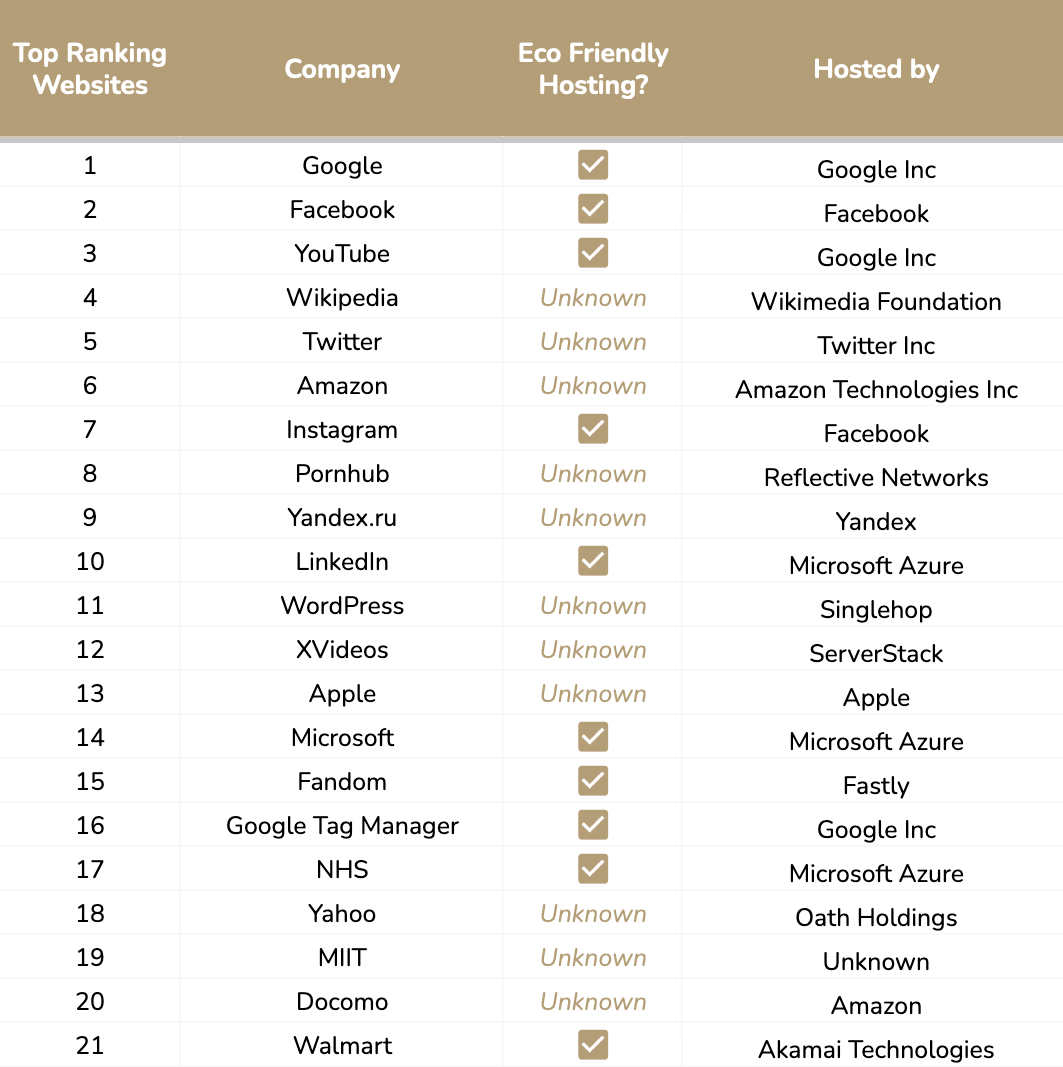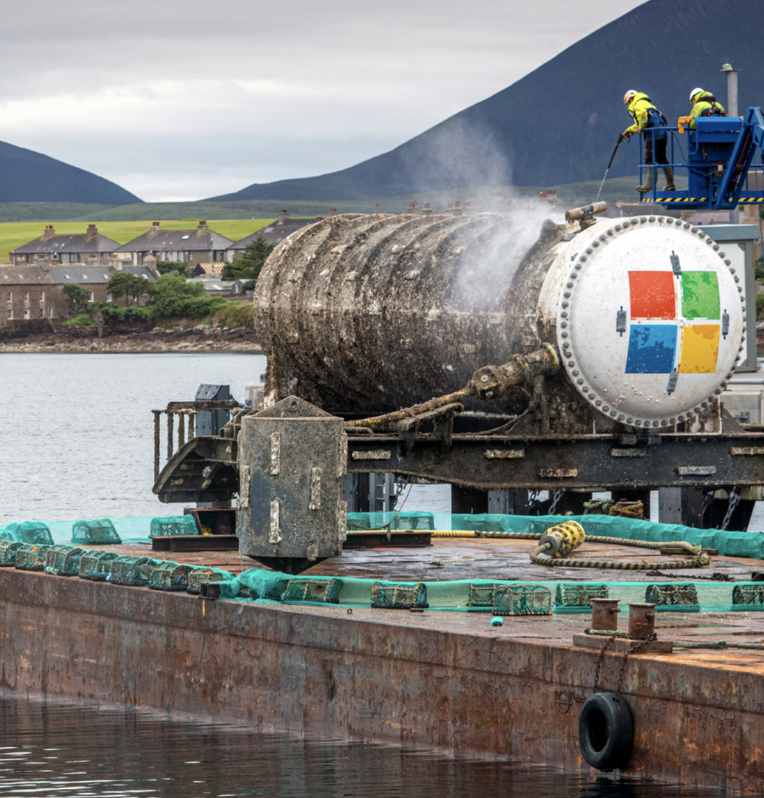Ways To Reduce Servers Emissions
The Environmental Dilemma of Modern Data Centres...

In an age of rapid digitalisation, the data centre stands as a colossal yet hidden backbone to our many sprawling online worlds. Internet use, according to the International Energy Agency (IEA), has more than doubled since 2010, posing the question of how we curtail the environmental impact of the huge data centre emissions.
Indeed, the IEA has oversaw large data centres seeing substantial energy use increases, growths of 20-40% annually. For instance, combined electricity use by Amazon, Microsoft, Google, and Meta more than doubled from 2017 to 2021. And in smaller countries, such as Ireland - data centre electricity use has more than tripled since 2015, comprising 18% of the nation's total electricity consumption in 2022.
Accurate measurement is the first step in addressing the challenge and setting a benchmark for improvements.
Electricity use by Amazon, Microsoft, Google, and Meta more than doubled from 2017 to 2021
Server Power Management for Energy Efficiency
As Michael Wilson, Director of Marketing for Nlyte points out in a blog on Nlyte’s website - "Data centres can significantly reduce energy consumption and carbon emissions by adopting server power measurement and management techniques. " So by focusing techniques, data centres can operate more sustainably, ensuring that servers only use power when truly necessary, thereby achieving both energy and cost savings.
To implement these strategies, companies like Eaton offer sophisticated DCIM software that aids in efficient power management. Additionally, general server management software typically includes features that contribute to power management, such as performance monitoring, resource management, and IoT integrations for power and temperature management. Furthermore, top server management providers, as listed by HostingSeekers, offer services that encompass these aspects, ensuring efficient power management in data centres.
But measuring through softwares can only go so far…
Upgrading Hardware
Adopting eco-friendly processors that are designed for optimal performance with minimal energy consumption is a significant step forward. Companies like AMD have been trailblazing in this domain with their AMD Ryzen processors that are known for delivering high performance with lower power consumptions.
These processors signify a new age of green computing, where combining power with sustainability is made more possible. Yet, it is not just about the processors. Another pivotal hardware upgrade revolves around the power supply unit (PSU) itself.
Companies such as Corsair provide high-efficiency power supplies, like their AX1600i Digital ATX Power Supply, which is 80 PLUS Titanium certified to ensure a 94%+ energy efficiency... drastically reducing electricity wastage and operational costs. So by going green, you save money in the long-term
The Significance of Power Supplies
By investing in modern, high-efficiency power supplies, businesses can drastically cut down on electricity wastage during the conversion processes.
SeaSonic are at the forefront of providing efficient power supplies. Their PRIME Titanium Series is a notable example that boasts a 94% efficiency at 50% load. Such units not only bring about operational savings but also contribute to a diminished carbon footprint, aligning with the broader goal of energy conservation in data centres.

website servers
Improved Cooling
The cloud revolution offers numerous advantages on top of new hardware adoption. One to note is optimisations of infrastructure that can result in lower energy usage. Innovations in cooling systems play a crucial role in this optimisation. As highlighted by Green Revolution Cooling's "single-phase liquid immersion cooling that provides superior data centre cooling at a lower cost while protecting the environment.”
This green innovation not only reduces energy consumption but also ensures performance is not compromised.
Harnessing Server Heat: Turning Byproducts into Benefits
One of the most innovative solutions emerging in the realm of energy efficiency is to repurpose the heat generated by servers. This wasted energy, which would otherwise dissipate into the environment can be harnessed for other productive uses.
Some businesses, in a bid to showcase the epitome of sustainability, have even begun using this excess heat to warm swimming pools. This not only optimises energy usage but also offers a visually impactful example of sustainability in action. Imagine swimming in a pool warmed by the very technology that powers our digital lives!
For instance, the British start-up Deep Green has utilised this concept at Exmouth Leisure Centre in Devon, where their technology significantly reduces gas heating requirements, and the carbon emissions that this would otherwise produce.
The Power of Virtualisation
Virtual machines have become a cornerstone in modern server management, and companies like VMware have been pivotal in driving this transition. By leveraging virtual machines through solutions like VMware's vSphere, businesses can host multiple server operations on a single physical machine. This not only amplifies the benefits in terms of resource utilisation but also leads to a significant reduction in the overall energy footprint.
Optimised Software & Operations
On the software side, refined and efficient code can lead to less intensive CPU loads, thereby reducing energy needs. Companies like New Relic and Solarwinds provide performance monitoring solutions that can help in identifying and rectifying inefficient code, leading to huge optimisations in server operations. Implementing intelligent software energy management techniques ensures servers aren't consuming unnecessary power.
Regular inspections and monitoring of energy use, facilitated by energy management solutions like those offered by Schneider Electric, provide opportunities to identify inefficiencies and rectify them promptly. Through diligent monitoring and optimisation, businesses can significantly reduce their energy consumption, whilst aligning to broader cost saving goals.
Cloud and Edge Processing
Shifting operations to the cloud allows businesses to benefit from the efficiency measures put in place by forward-thinking cloud providers like Akamai Technologies and AWS (Amazon Web Services). These services exemplify the optimised infrastructure that can result in notable energy savings. Additionally, edge computing providers such as IBM, allow for data to be processed closer to the user's origin, alleviating the strain on central servers and minimising the energy associated with larger data transmissions.
Data Center Infrastructure Overhauls
Data centre infrastructure plays a pivotal role in energy consumption. According to the International Energy Agency, “data centres already account for 200 TWh per year in energy consumption - no less than 1% of the total electricity demand worldwide."
Strategic cooling techniques, like hot and cold aisle setups, can be utilised to achieve optimal temperatures with efficient energy use. Companies such as Eaton and Vertiv provide advanced solutions that are adaptable for both hot and cold aisle containment, ensuring efficiency and capacity maximisation from the core to the edge.
It is also vital to monitor the Power Usage Effectiveness (PUE) number. A lower PUE indicates that more of the data centre's energy is being used to power servers rather than other infrastructure. Moreover, designing data centres with modularity in mind can ensure that they can expand responsively, minimising resource wastage.
Ambient Air Cooling: A Green Strategy
One of the effective cooling techniques is leveraging ambient air cooling. By harnessing the naturally cool air from the external environment, data centres can achieve desired temperature levels without over-reliance on power-hungry cooling systems. Airedale International Air Conditioning is known for their innovative, high-efficiency cooling solutions, and they are a great example of this technology. As is Microsoft's underwater data center trials.

Transitioning to Clean Energy
Transitioning to cleaner energy sources is a compelling approach to reducing server emissions. Harnessing natural energy, such as wind, solar, or hydroelectric sources, provides a more sustainable power solution.
Experts from EKI Energy Services Limited, in their discussion on green energy have laid emphasis on the authenticity of this approach by stating that "Energy Attribute Certificates (EACs) play a pivotal role in tracking the origin of renewable electricity and its environmental attributes”.
By providing transparency and accountability, "these certificates enable buyers to claim ownership of the environmental benefits associated with clean energy." EACs, which come in both bundled and unbundled forms, offer different advantages based on organisational size, energy requirements, and climate targets.
The Limits of Tree Planting
While initiatives like planting trees to offset carbon emissions sound promising, they are not the winning solution. Tree planting, though beneficial, has limitations in its capacity to absorb the massive CO2e output of industrial processes. Merely planting trees without ensuring their longevity and maintenance can lead to short-lived solutions, more than often falling short of providing biodiversity through monoculture tree-planting schemes.
Education & Culture
The importance of cultivating an energy-conscious culture cannot be understated. By training staff and emphasising the value of energy-efficient operations, businesses can ensure that best practices are consistently followed.
Some providers that offer education on promoting energy-conscious internal company cultures include Zack Academy and The Data Centre Energy Practitioner Program.
The Value in Hardware Selection: RAM Modules and SSDs
When we discuss energy conservation in data centers, we often think of large equipment and cooling systems. However, the details - right down to the specific components like RAM modules and SSDs, play a vital role.
Companies offering such componentry like Samsung and their DRAM technology and Kingston offer modern RAM modules and SSDs that are designed to be more energy-efficient, consuming less power and generating less heat.
Investing in these components not only enhances the performance of servers but also significantly reduces their energy footprint. Over time, these savings can accumulate, making the choice of energy efficient components a crucial aspect of a lean tech operation.
Network Optimisation: A Path to Efficiency
A data center’s energy consumption isn't just about the servers. The path that data takes, from storage to the end-user is equally important. Cisco Systems, AT&T Inc., Verizon Communications Inc., and T-Mobile US Inc for example offer network optimisation solutions that can help data centres achieve these goals. By optimising network paths, and ensuring the efficient functioning of network equipment, data can traverse shorter, more direct routes.
This reduces the time and energy required for data transmissions, resulting in a win-win scenario where both performance and energy efficiency see marked improvements.
Regular audits remain vital to spot underutilised servers, providing opportunities for decommissioning and yet further energy conservation.
A Sustainable Footprint: Our Shared Responsibility
The challenges posed by electronic waste reminds us of the broader implications of rapid technological advancements. As we integrate more tech into our lives and businesses, we must also consider the environment and our shared responsibility towards it.
Server recycling companies like IT-Recycle will refurbish and/or recycle outdated IT hardware. Innovative approaches like this in server and network recycling include advanced data wiping techniques, the recovery of valuable materials from old servers, and eco-friendly disposal of equipment.
The e-waste industry also focuses on automation and AI in e-waste management to enhance efficiency. Ensuring regulatory compliance and certification, such as ISO 14001 or e-Stewards, is crucial in selecting a recycling company.
These efforts are not just about managing the immediate hazards of improperly managed e-waste, such as toxic substances like lead and mercury. They are also about minimising the broader environmental impact, conserving natural resources, and contributing to a sustainable digital future.
Let this serve as our final thought: in our pursuit of digital transformation - let us all remain equally committed to a digital environmental transformation. The two are not mutually exclusive; in fact, together, they sketch the blueprint for a future that is both technologically advanced and environmentally sound.